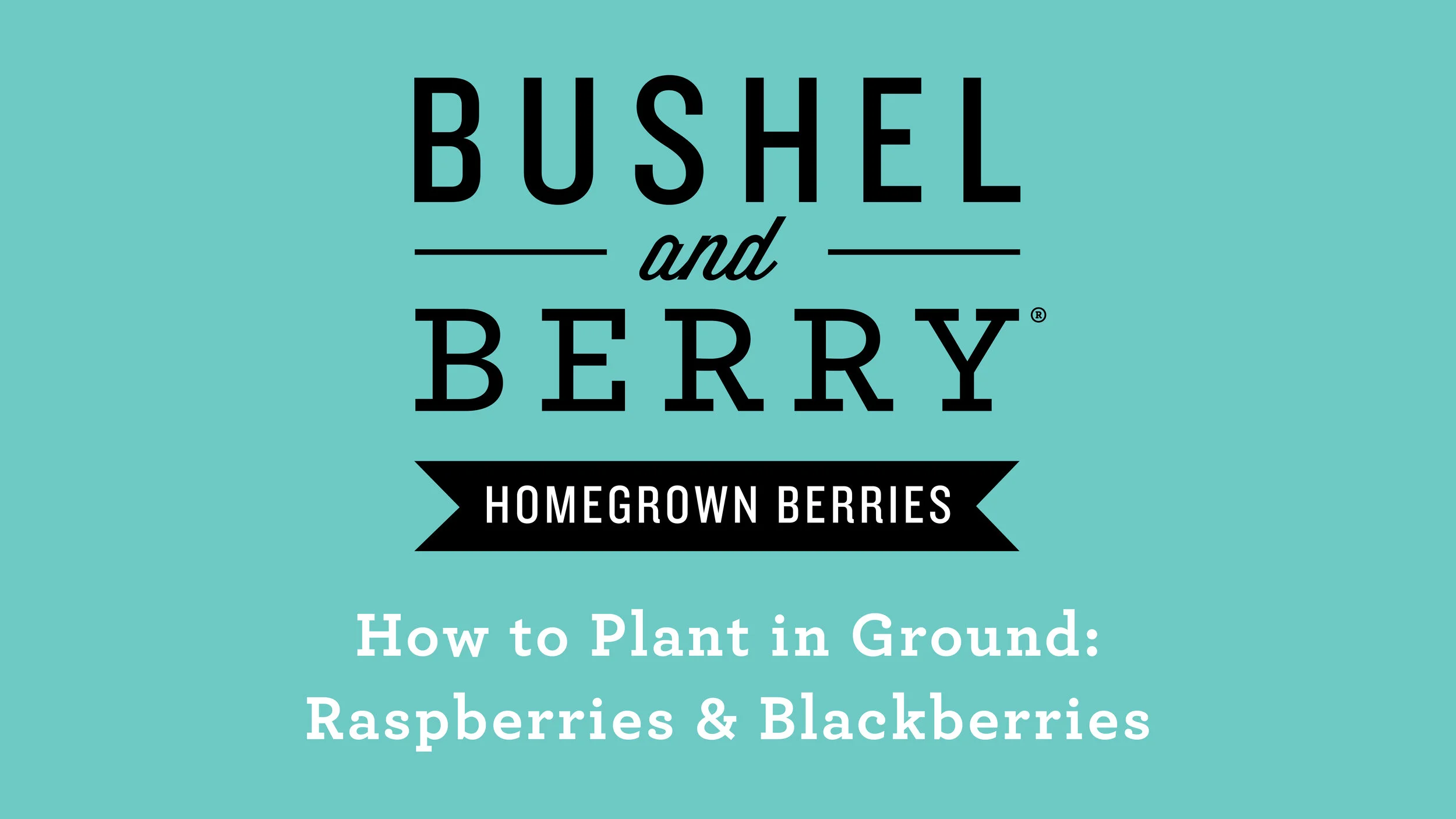Baby Cakes® performs best in a fairly neutral soil with a pH of 6.5–7.5. The soil and location should be well-drained and in full sun. In regions with extreme heat, this variety will perform best in afternoon shade to protect it from excessive heat.
All of the varieties in the Bushel and Berry® collection will thrive in patio pots, edible gardens or in the landscape for years of enjoyment. We recommend planting in a large container, up to a half-whiskey barrel (22” in diameter). Remember, this is a cane berry that will continue to grow shoots which will eventually fill the pot.
Plant In Container
Choose a container (16” or larger in diameter and at least 12” deep is ideal).
Fill ⅔ of the container with regular potting soil.
Add plant to pot, gently loosening the roots of the plant.
Fill in soil around plant using regular potting soil.
Place plant in a sunny spot. It will need at least 6 hours of full sun each day.
Water the plant frequently, ensuring it stays moist but not overwatered.
Plant IN GROUND
Pick a sunny place to plant. All berry plants need at least 6 hours of full sun to produce berries.
Dig a hole slightly larger than the container. Work the soil at the bottom of the hole with your shovel so that it’s loose and aerated.
Remove the berry plant from its container. Use your hands to gently loosen the roots at the bottom of the plant.
Place your plant in the hole, ensuring that the base of it is level with the soil.
Add soil back to the hole around the plant. Crumble the soil so that it’s nice and aerated. If desired, mulch around the plant.
Water your plant thoroughly around the base, allowing it to soak in. Continue to water 2-3 times a week, ensuring that the plant stays moist but not overwatered.
Fertilizing
Fertilizing your Bushel and Berry® plants is not necessary for them to grow and produce tasty berries, but it will help your plant thrive. For raspberries and blackberries, a balanced liquid fertilizer in early and late spring is ideal. Pick a fertilizer that contains Nitrogen, Phosphorous and Potassium with the same numbers and closely follow the product label instructions.
Tip: If your plants starts to yellow in the summer, a bit of balanced liquid fertilizer will help perk it up in addition to lots of water.
WATERING
The amount of water your plants need will depend on your climate but generally, you want to make sure the plant has consistent moisture but isn’t overwatered. This usually means watering two to three times a week for plants in the landscape and daily if it’s in a container.
Tip: Remember, plants and their roots in patio pots dry out faster than plants in-ground, especially on warm summer days. It's important to water potted plants daily. A good way to gauge your watering is to water until you see runoff coming out of the drainage holes.
PRUNING
Allow your plant to go dormant in the winter without pruning. In early spring, you should start to see new green sprouts coming up from both the soil and on some of the canes. The sprouts from the ground will become canes that fruit next year. Old canes with new growth emerging should fruit this year. Leave all the new shoots from the ground and old canes that have green leaves emerging. Prune all the dead canes with no new growth at ground level.
WINTER CARE
Bushel and Berry® varieties require little winter maintenance and can usually be left outside during cold months. However, plants in decorative containers and planters are more at risk than plants in the ground. If your plants are in the ground, it’s a good idea to mulch heavily around the base and give them extra water.
If your plants are in decorative containers and you have harsh winter weather, insulating the plant or moving the container to an unheated garage or basement is a good idea. If you store your containers in the garage, remember to protect them from the winter temperatures that can come in as you open and close the door. Keep your containers inside until the threat of the last frost has passed (typically in early spring). While storing the berry plants inside, make sure to keep the soil moist but not soaked.



